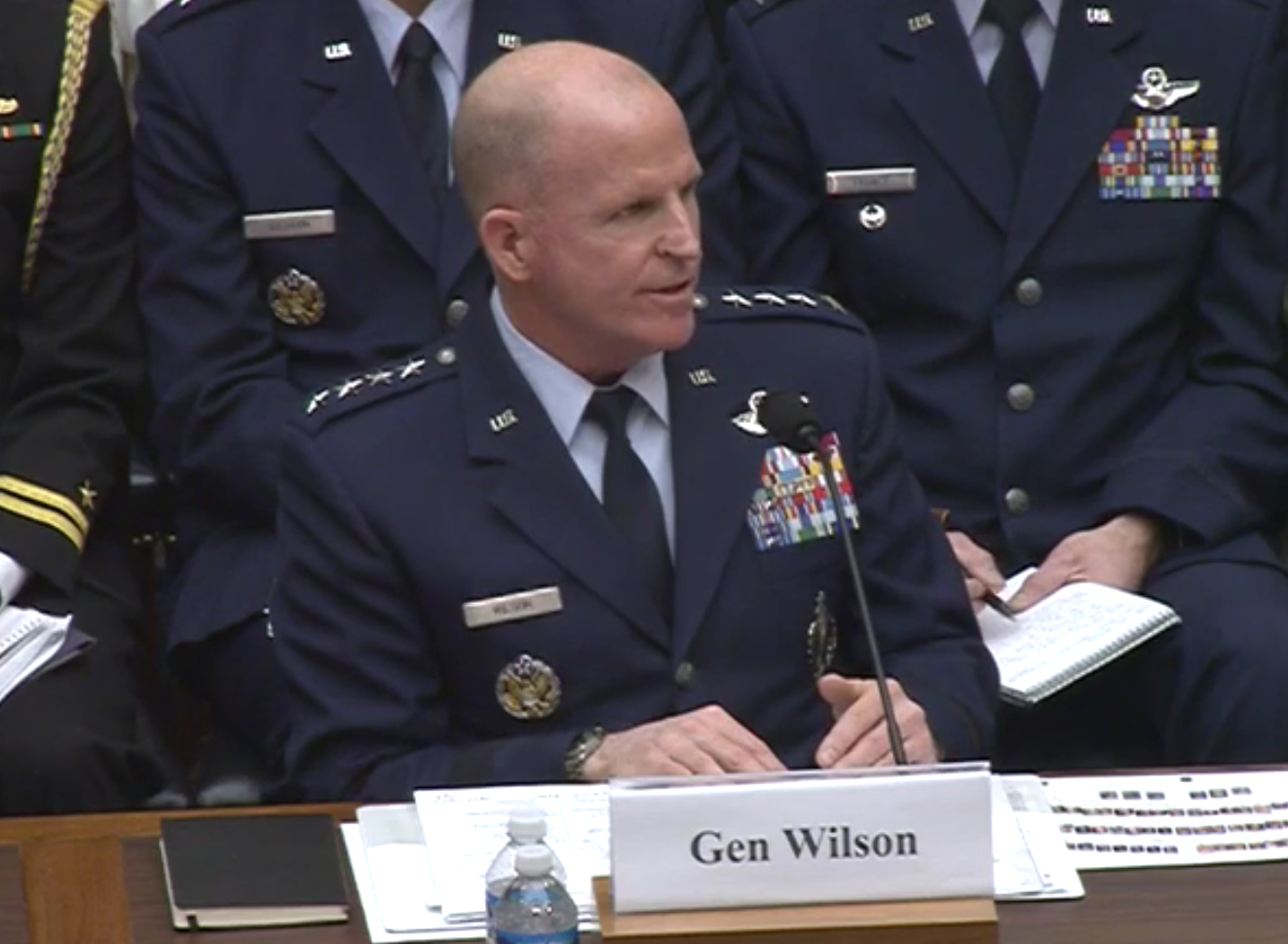
Vice Chief of Staff. Gen. Stephen Wilson testifies before the House Armed Services Committee on Feb. 7, 2017. Screenshot photo.
Air Force readiness is worse than it was in the “hollow force” days of the late 1970s, Vice Chief of Staff Gen. Stephen Wilson told the House Armed Services Committee Tuesday morning. Describing what he called “the smallest and oldest Air Force” in US history, Wilson told lawmakers that “we’re out of balance” due to “non-stop combat,” “budget instability,” and a “declining top-line.”
In this climate, USAF is forced to make “unacceptable trades” between readiness and modernization. He said the service is “less than 50 percent ready across our Air Force and we have pockets that are below that.” When asked if the Air Force could fight two simultaneous regional conflicts in different parts of the world, Wilson said it could do so only with units arriving “late” to the fight and with “higher casualties.”
By way of comparison, he said, the Air Force of the Desert Storm era had 500,000 personnel and 134 fighter squadrons, while today’s Air Force has 317,000 Active Duty personnel and 55 fighter squadrons. USAF had 8,600 aircraft in 1991, but only has 5,500 today, and the average age of a USAF aircraft is 27 years old today, Wilson said.
“During my time as Vice Chief of Staff of the US Air Force, I testified in several readiness hearings. I am more concerned now than ever about the need to shore up the Air Force’s readiness,” said Air Force Association President Larry Spencer. “Having served over 40 years, I know first-hand the results of having a hollow force—it is not good for our Air Force, and it is not good for our nation. This upcoming budget supplemental must immediately address readiness concerns for our nation’s first responder, the US Air Force.”
Wilson insisted that with the help of “stable, predictable funding,” USAF can still “dig out of our readiness challenges.” He urged Congress to repeal the Budget Control Act and said the Air Force needs to build its manpower up to 350,000, increase “weapons and support” funding, and “flying hours,” and “modernize our force” by keeping programs like the F-35, KC-46, and B-21 “on track.”
Given healthier conditions like these, Wilson estimated it would take six to eight years to regain a sufficient level of readiness. In the near term, he said without a supplemental defense budget in 2017, USAF would see “sequestration-type actions” this year, meaning a further reduction in flying hours and longer backlogs at the maintenance depots.